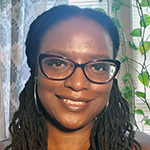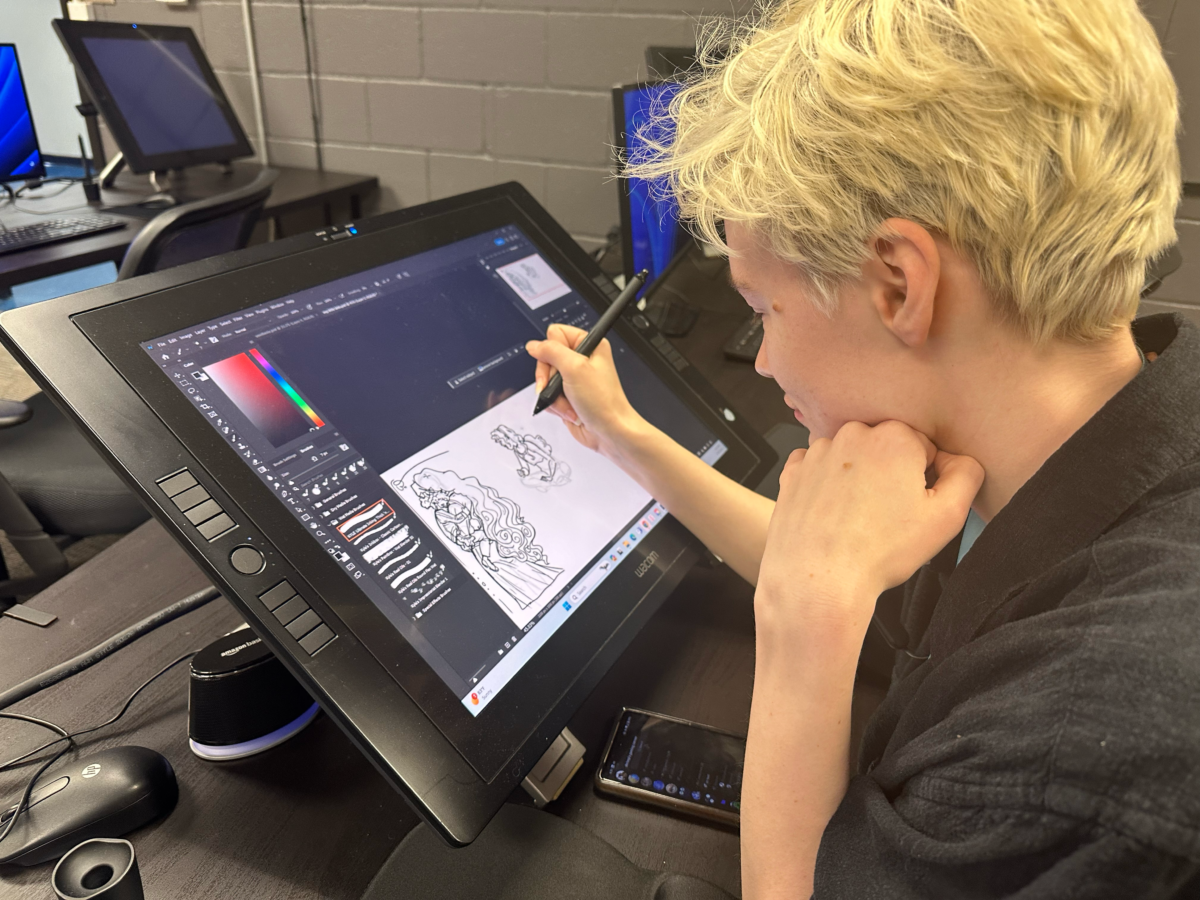
© Maria Shchipakina – stock.adobe.com
Looking for a good scary movie to watch this Halloween? Get your popcorn and candy ready for these recommendations by some of our faculty experts who weighed in on their scariest favorites.
Roger Hallas

Roger Hallas
“I am particularly partial to artsy horror films that are less gore and more psychological terror. My two particular favorites are both 1990s films: ‘Funny Games’ (1997) and ‘Safe’ (1993). Both deal with the psychodynamics of upper middleclass families whose lives are terrorized by sociopathetic youth and environmental contamination or psychic alienation. What makes these films so powerful is precisely what they don’t show, but imply through rigorous framing, mise-en-scène, editing and sound design.”
Hallas is an associate professor of English in the College of Arts and Sciences and teaches graduate and undergraduate courses in documentary media, world cinema, visual culture and LGBTQ studies. He directs the Syracuse University Human Rights Film Festival held annually in September.
Shaina Holmes

Shania Holmes
“‘Starry Eyes’ (2014) is my favorite because it is a commentary on the entertainment industry, and I worked on it. Being able to work with my friends on this indie film and watch it have a successful film festival run, which launched the writing and directing career of my friend and director Kevin Kolsch, was an incredible experience. My role with the production included visual effects. I was the one fixing the lead actresses bald cap during the transformation scene and creating glowing symbols during a ritual scene.”
Holmes is an assistant professor of television, radio and film in the Newhouse School and teaches various courses in visual effects and post-production to undergraduate and graduate students, including visual effects for live action, postproduction practices, animation for film and tv and visual effects analysis. In addition to teaching, Holmes is a visual effects artist, producer and supervisor with over 200 film and television credits.
Jaynelle Nixon

Jaynelle Nixon
“If I had to pick a favorite, I’d say my favorite horror film is ‘The Girl With All the Gifts’ (2016). The main character is a monstrous (queer) young Black girl who learns that difference is not hierarchical, and the other children like her are just as valuable and worthy of life as the ‘normal’ human beings who require the monstrous children’s sacrifice to survive. When faced with a choice of sacrificing herself to save the humans she loves, she chooses life and ushers in a new form of human life on Earth.”
Nixon is a visiting assistant teaching professor in the Department of Women’s and Gender Studies in the College of Arts and Sciences. Her current research examines parallels between monstrosity in horror films and the intersections of race, gender and disability. She specializes in queer theory, Black feminism, cultural studies, disability studies, gender and sexuality studies, film studies and media studies.
Kendall Phillips

Kendall Phillips
“If folks are looking for a golden oldie, why not go back to the silent era. One of my favorite early horror films is ‘The Cat and the Canary’ (1927). This one has been remade a few times, but the original silent version still holds up and offers some spooky and silly fun. If people are looking for something a bit more intense, I still think ‘The Texas Chain Saw Massacre’ (1974) is pound-for-pound the best American horror film. Intense, violent, unrelenting—this one is for mature audiences only. Finally, if folks are looking for a horror film that mixes ghosts, fairy tales and some grim aspects of reality, I loved ‘Tigers are Not Afraid’ (2017), a beautiful and haunting film from Mexico.”
Phillips is a professor in the Department of Communication and Rhetorical Studies in the College of Visual and Performing Arts. The author of “A Place of Darkness: The Rhetoric of Horror in Early American Cinema;” “Controversial Cinema: The Films that Outraged America” and “Projected Fears: Horror Films and American Culture,” his expertise includes American film, public discourse, rhetoric and rhetoric of popular culture.
Nancy Keefe Rhodes

Nancy Keefe Rhodes
“My favorites, in no particular order, include but are not limited to ‘The Girl With All the Gifts’ (2016), the Alien quartet: ‘Alien’ (1979), ‘Aliens’ (1986), ‘Alien3’ (1992) and ‘Alien: Resurrection’ (1997), ‘28 Days Later’ (2002), ‘The Shining’ (1980), ‘Only Lovers Left Alive’ (2013), ‘Habit’ (1995), ‘Fear Street’ (2021), ‘Jennifer’s Body’ (2009), ‘Get Out’ (2017), ‘His House’ (2020), ‘Ganja & Hess’ (1973), ‘Beloved’ (1998), ‘The Cure’ (2017), ‘Dead Ringers’ (2023) and ‘Horror Noire’ (documentary, 2019). These are all well-made, thoughtful films that reflect the anxieties going on in culture at the moment they appear. Horror is a very ancient form of art—all cultures have ghosts, vampires or some version of the ‘undead.’ Like detective stories, they are also a democratic form of art that is widely popular and not limited to elites.”
Rhodes is an instructor in the Department of Film and Media Arts in the College of Visual and Performing Arts and teaches FIL 250: Horror, Violence, & Culture. Rhodes started teaching this class several years ago because she was curious about what seemed like a surge of new horror films and it quickly became the most popular course she has ever taught. She has also published more than 400 film reviews, interviews with and profiles of filmmakers, photographers and artists, as well as gallery exhibition catalog essays for her own curatorial projects and others.
Will Scheibel

Will Scheibel
“My favorite horror film is ‘The Innocents’ (1961), directed by Jack Clayton and adapted from the Gothic novella ‘The Turn of the Screw’ by Henry James (1898). The film holds viewers in suspense between two possibilities that are equally frightening: that the main character is losing her mind and that there is actually something supernatural at work. With its widescreen, black-and-white cinematography and eerie uses of deep focus, lap dissolves and low-key lighting, the film is a truly nightmarish experience, driven by a knockout performance by star Deborah Kerr.”
Scheibel is an associate professor of film and screen studies in the College of Arts and Sciences. He is currently researching the formation of what would become known as the “Universal Classic Monsters” (Dracula, Frankenstein’s monster, Wolf Man, etc.), from a brand identity in the studio system based in genre and stardom, to a fan phenomenon in the era of television and home video, to a contemporary entertainment franchise for a new book titled “Monsters in the Movie Lab: Horror, Seriality, and Universal Pictures.”
David Tarleton

David Tarleton
“My favorite horror movie has got to be ‘The Shining’ (1980). I teach it in class sometimes to demonstrate numerous filmmaking techniques, from off-balanced editing rhythms to how to cross the 180-degree line effectively. I think it’s a nearly perfect movie and part of what makes it so effective is that it’s all about mood and tone. For most of the film, very little happens, yet it’s absolutely terrifying for the audience. A kind of reverberation of the themes and trauma can stay with the audience for days after watching. Which I did for the first time when I was far too young. Highly recommended for anyone looking for a Halloween scare.”
Tarleton is chair of the Department of Film and Media Arts and a professor of film in the College of Visual and Performing Arts. An Emmy-nominated producer, director and editor, Tarleton has created programs for Sony Pictures, The Muppets, Apple TV+, Syfy, Walt Disney Pictures, 3Net, Fox, Comedy Central, Disney Channel, Tokyopop, Mattel, Universal, Warner Brothers, Baby Einstein, Showtime, Learn360, Random Media and more.




